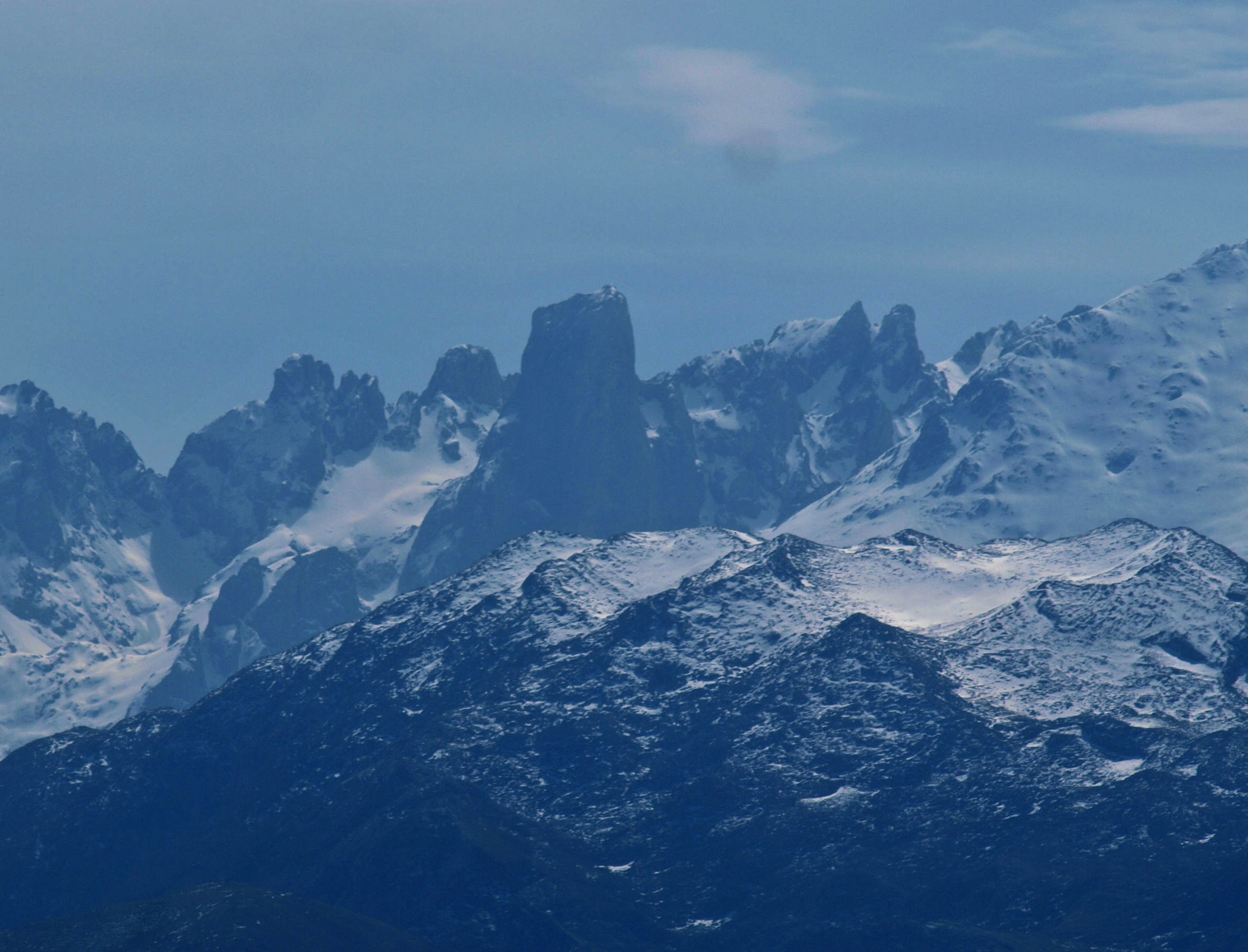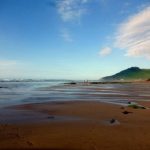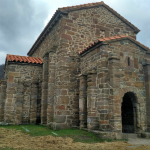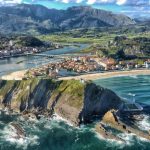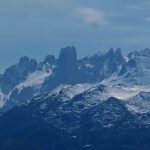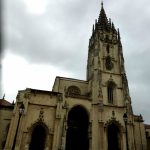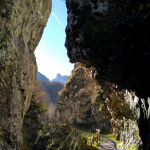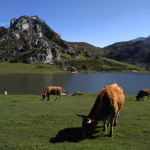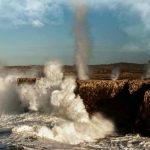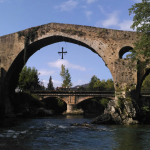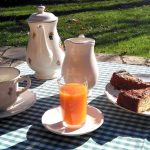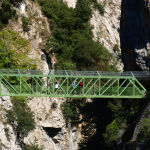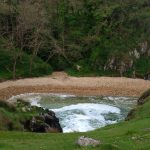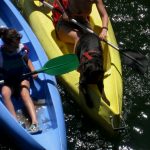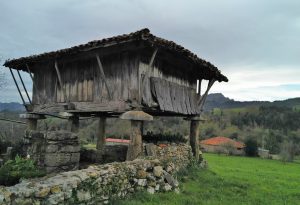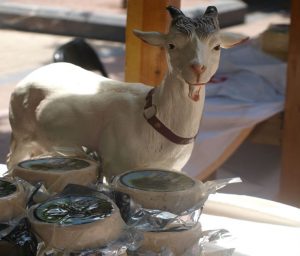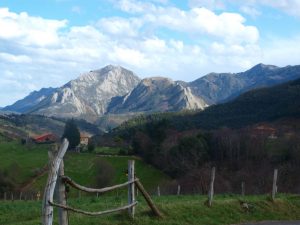Some tips about Asturias
The Principality of Asturias is, without doubt, a privileged region. Pressed narrowly between the rough Cantabrian Sea to the North and the steep peaks of the Cantabrian Range to the South, Asturias is a land of contrasts, with a diversity of landscapes, constantly changing. One of the characteristic feature in Asturias is its diverse and pleasant land that invites one to enjoy and contemplate it.
The Asturian landscape with its variety of green and grey tints are unique in Spain. The coastal fringe is dotted with tiny fishing ports; there, the rocky cliffs separate the wide sandy beaches from charming isolated and tiny coves. In the interior there is a mixture of narrow valleys and canyons, carved by tumultuous rivers that every year are visited by salmon; and neadows bordered by dense woodlands.
Asturias keeps important relics of the past, with their own singularities, too. Caves of Prehistoric Ages have been recently discovered decorated with wall paintings, tools, artifacts and other evidence of the Asturiense, a prehistoric era, unique in the world. Other remains of Asturiense are ancestral dances, that hace survived till our days: The best known are pericote and corri-corri. More modern are the castors (Celtic villages); also the ephemeral Kingdom of Asturias, pioneer in Spain`s struggle against muslims, bequeath us fine monuments in the Preromanesque style; some of them have been declared “the heritage of mankind”.
Artistic styles
This peculiar mosaic offers a generous proof of many artistic styles (Romanesque, renaissance, gothic). Some habits have survived almost intact for centuries, partially because of the region`s isolation, forcing the development of an economy based on its own natural resources.
This coexistence of tradition and modernisation is not easy. Asturias finds itself in a permanent struggle to keep its traditional and adapt to the modern age. Today Asturias suffers strong economic recessions in the industrial and farming sectors; nevertheless the region is braverly fighting and hopes these efforts are helping to find new sources of wealth and that the tourism industry will be one of them.
SITUATION
Principality of Asturias autonomous community located, in the north-western quarter of the Iberian peninsula, has a surface of 10.565 km2 forming a sort of triangle: The northern side is the Cantabrian coast , running along 43º36´paralell.
West is a line 80 km over the 7º West meridian that forms the border with Galicia.
The third side of the triangle is the southern border with León. Eastern tip area borders the province of Cantabria.
OROGRAPHY
Orographically Asturias can be split in three areas; Mountain, mainly near the león borderline, inner valleys, and plains, and the coastal fringe.
Each area has its peculiar attributes determined by altitude and distance from the sea climatological conditions, fauna and floras.
The Asturias mountains form part of the Cantabrian range, running alone 250 kms from the Caurel sierras – on the border with Lugo province -, to the Labra peak on the Cantabrian border. Peaks of this main ridge are of varied height and structure; from it, a series of short sierras –shorter in the eastern area- fall off northward down to the Cantabrian Sea.
The coastal line between emerged and submerged lands constitutes coastline 334 km long, with 192 beaches alternated by capes and cliffs.
In the coastal fringe 3 to 5 km inland there are small sierras with a maximum altitude of 265 m, formed by penetration of sea waters and subsequent sinking of the coastal relief.
This phenomenon gave rise to the existing system of cliffs, rising as high as 110 m (The Cape Peñas cliffs).
HYDROGRAPHY
The hydrographic system is structured around 10 bassins. The most important is the nalon-Narcea (with 46% of all water drained into the Cantabrian Sea); it is the central are of Asturias. Westward, the Nalòn, the Eo and navia are the most important rivers. In the East there are the Sella and Deva-Cares rivers.
Half a hundred small lakes and lagoons are scattered over mountainous areas: the lakes of Valle (2 km. periphery), Calabazosa and Circo de Saliencia in Somiedo; Enol and Ercina in Cangas de Onís; Sobia, in Teverga; Ubales, in Caso and Tchagüeños in Cangas del Narcea, are the most important.
CLIMATE
Asturias is dominated by a mild atlantic, climate, with moderate temperatures throughout the year and heavy rainfalls, up to 1.500 mm in western areas of the interior; annual precipitation in the coastal fringe is 1.150 mm.
Snow is frequent (at least 30 days every year) in the higher mountains; below 800 m snow-falls are very rare.
Daytime temperatures in summer rarely exceed 21 ºC. January is the coldest month, with temperatures of 6 to 8 ºC.
VEGETATION
The vegetation of Asturias belongs to the Atlantic area but is strongly affected by the proximity of the sea; nevertheless it offers some specimens of the Mediterranean zone.
The are different botanic communities, living in assorted ecosystems according to the altitude and the soils.
Beaches, of many degrees of salinity, produce desert type plants. In estuaries ands swamps the flora is directly influenced by the sea penetration; a gradient in function of the salinity degree of its clayish soil is established. The estuaries of Eo and Villaviciosa offer rich examples of this vegetation.
The are bellow 500 m is mostly under cultivation (family size or factory farms); also there are many man-made (in fact one half of the existing woods in Asturias) forests of exotic pine trees and eucalyptus for paper mills.
Former indigenous woodlands of oak, chestnut and beech have been drastically reduced in order to cultivate faster growing specimens; also, former native forests have being broken up for land cultivation.
Along the riversides, alders and willows are frequent.
The band between 600 and 1.000 m. is mostly populated by oaks (eastern Asturias), and beeches (western).
Upwards (up to 1.500 m), woods of beeches are the most common.
The extension of native woods has been reduced in the last few years to only 15% of the country (some 165.000 ha); there are five forests greater than 1.000 ha each. Only one (Muniellos) has a surface of 3.000 ha.
The subalpine and alpine areas, over 1.600 m offers smaller plants and tress of the high mountain flora.
Meadlowlands are mostly devoted to pasture (sometimes too exhaustive); there are some plants that grow exclusively in the Spanish peninsula.
FAUNA
Spain boasts some of the richest fauna in Europe; Asturias is relevant in the aspect: 15 amphibian, 22 reptile, more than 325 birds and mammals live in Asturias.
The brown bear of Cantabria is the most threatened species; the are less than 100 specimens and the possibilities of recovery are scarce.
Brown Iberian Guillemot and the Eagle no longer nest here.
The Plimirgan, and the Mountain Goat are extintict in Asturias, the only remain in the Pyrenees.
Other species, like the Royal Eagle, Capercaillie, Vulture and Otter have gone through critical periods but their survival is relativelty guaranteed.
Almost all the native Spanish amphibian live in Asturias: Most frequent are the Salamander, Tritons (both striped and paled), Frogs and Troads.
The reptiles, around one half of all native species existing in the Iberian Peninsula are present in Asturias –only the desert and hot climate ones are missing-. Among them the most frequent are: Wall Lizard The collared, plain and viperine Snakes and finally the Seoane Viper.
Wildlife birds enjoy a sanctuary in Asturias, because of its mind climate and various existing ecosystems.
325 species have been registered up to now (156 of them are nesting in Asturias). There are plenty of Gulls, Cormorants and, in the migratory season, Gannets, Linnets and Terns. Diverse varieties of Ducks come to visit our estuaries and beaches in the seasonal migrations, some of them nest in winter.
Sparrows, Magpies, Robins, Dunnocks, Blackbirds, Chaffinches and Buzzards.
In the woodlands you find the Jay, Capercaillies, Goshawk. In the higher mountains, the Eagle, Vulture, Crook, Ptamirgan and Dunnock.
The Mammals are also well represented in Asturias. Of the 108 native species in Spain, 87 are living here (only the specifically Mediterranean ones don,t live here).
The population of Boar, Deer and Wolf has increased over recent years. On the contrary the number of porpoises, a small coastal cetacean has disminished.
NATURE CONSERVATION AREAS
National Parks to protect wildlife are numerous in Asturias. The Parque Nacional de la Montaña de Covadonga (created in 1981), has ana rea of 12.294 ha; Apart from its impressive landscapes, the Park offers well kept beechwoods, and animals like Ibex, Royal Eagles, Vultures, Nival Sparrow.
The parquet Natural de Somiedo (29.120 ha), was created in an attempt tos ave one of the last redoubts of the Brown Bear of Cantabria.
It also gives shelter to large families of Capercaillies, Wolves, deer and Mountain Birds of Prey.
In its meadows you can find the “cabañas con teito de escoba”, old stone cabins thatched with straw; the experts claim its existence dates from the earlier Celtic establishments. The Muniellos, Biological Reserve (9.000 ha), protects one of the greater and best preserved Oakwoods in Europe.
His fauna contains the whole species of the Cantabrian Range (Brown Bear included); and the western most population of Ibex in Europe. The Reserve is situated in the “Cangas del Narcea” and “Ibias” counties.
Among the Hunting Reserves we note the “Sueve” (8.300 ha, counties of Piloña, Caravia, Colunga, Ribadesella and Parres); there, the last remaining Asturian wild horses, the “Asturcones”, roam; in the Sueve, the only Falow deer of the Cantabrian strip also live.
“Degaña (12.340 ha, very wooded), is an important nucleus for the breeding of the brown Bear; “Somiedo (89.650 ha), reinforcing the effectiveness of the Natural reserve of Somiedo; Caso (16.969 ha) and Ponga (17.720 ha), with the most important Beechwoods of Asturias, an a great population of Capercaillie, Ibes, Roebuck and Deer. He reserve of illaviciosa (1.225 ha), is devoted to preserving the nesting of migratory birds.
There are projects to extend the protected areas; The Picos de Europa National Park: Fuentes del Narcea National Park, will cover in future large woodlands in Muniellos (today is a Biological Reserve), and Redes.
The Villaviciosa Natural Reserve, the estuary of the Eo (currently takes in the greatest winter population of ducks in Asturias).
Protected Landscapes in Carondio, Aramo, Sueve, Cuera.
Finally, the coastal fringes of Llanes and cape Peñas.

